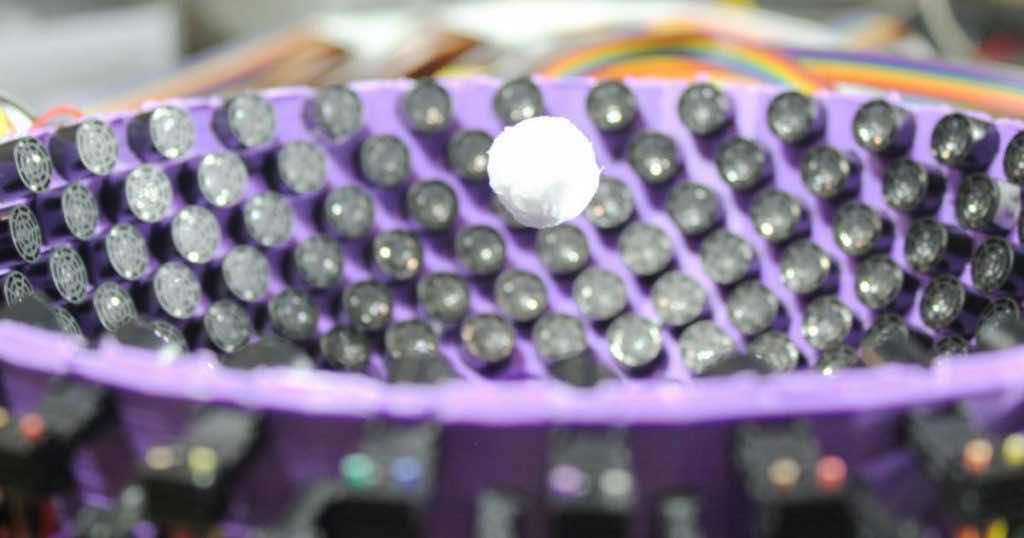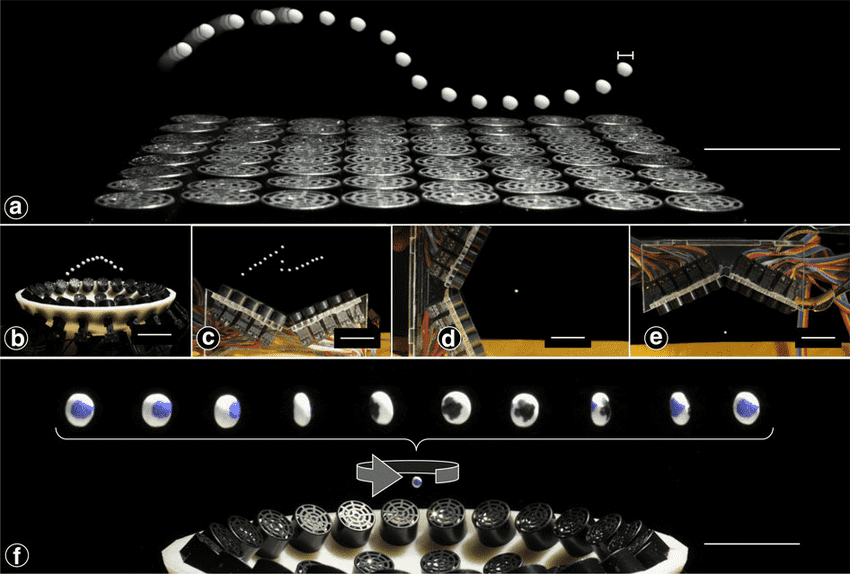Using sound energy to lift objects is a concept that is now evolving into a reality. The practical manifestation of this ambitious idea was put on display when in Japan, scientists lifted small polystyrene balls from a solid surface with nothing but sound waves.
Various sound tweezers have surfaced in recent years. In addition, larger objects have also been lifted using this technology. For instance, “acoustic tractor beams” were used to lift and hold in place relatively larger objects.

A team of scientists from the Tokyo Metropolitan University set their eyes to develop an acoustic tweezer to lift a wooden board by reflecting sound off a rigid surface. This required that a novel hemispherical array of ultrasound transducers be developed after overcoming the technical hurdles dovetailed with the process and accurately controlling the varying sound waves in real-time in a way that allows levitation of small objects above the platform surface.

To overcome this overtly technical problem, the team separated its hemispherical array of transducers into eight blocks and reversed the polarity of half in each block. The phase and amplitude of the sound waves emanating from each block were individually optimized, enabling the system to generate an acoustic trap at a particular position, which can be shifted by altering the behaviour of the individual blocks.
A series of simulations were displayed, and the outcome was demonstrated through experiments using the acoustic lifter and levitate a polystyrene ball just 3 mm in diameter above the wooden board.

The technique applied was not perfect. The balls were not lifting in some instances, and in others, they were not stable at a particular position. Nevertheless, scientists are hopeful that they would improve upon the technology. This is the first demonstration of “non-contact pick-up of a particle on a rigid stage with reflection using a multi-channel-controlled hemispherical ultrasonic transducer array,” the researchers write in their paper.
That paper was published in the Japanese Journal of Applied Physics, while the video below shows this impressive system in action.


